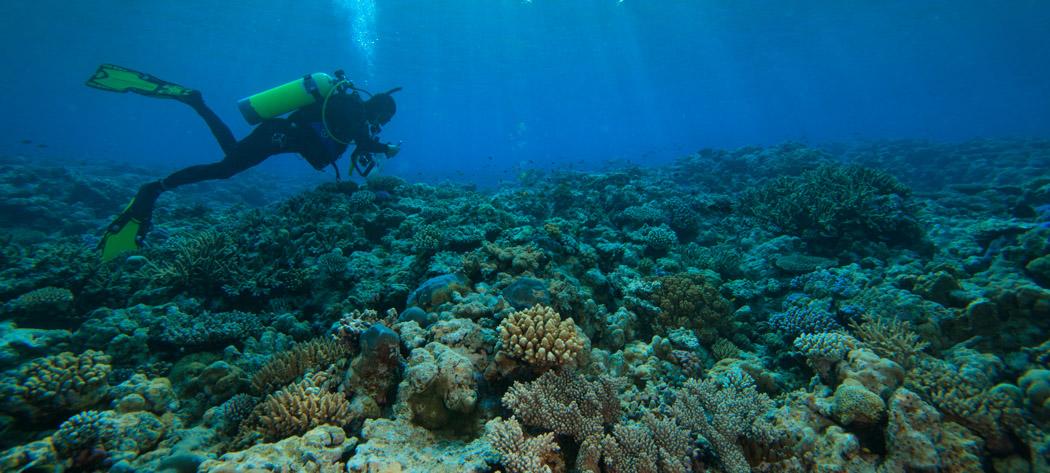Genetic diversity is critical to helping animal species adapt to change but this team from the Australian Institute of Marine Science, Curtin University and the Western Australian Museum has for the first time, tracked genetic diversity in coral through time.
In a novel study spanning 10 years, the researchers looked at the impact that coral bleaching and cyclones have had on the abundance and genetic diversity of a reef-building coral in northwest Australia’s reefs.
Australian Institute of Marine Science and lead researcher on the project Dr Jim Underwood said that the study published in the journal Molecular Ecology, today, reveals a better understanding of the ecology and evolution of corals.
“Until recently, we did not know how genetic diversity actually responds to disturbance associated with climate change: in this study, we found that high levels of genetic diversity have been maintained in these corals over the last decade despite severe bleaching and cyclones” Dr Underwood said.
AIMS' Dr James Gilmour has been documenting coral bleaching in WA since 1998, when there was a major mass bleaching event at the oceanic atolls of Scott Reef which reduced live coral by around 80 per cent.
Dr Gilmour said this was followed by another moderate bleaching in 2010, 2011 and 2013, cyclones in 2005, 2007 and 2012, and another severe bleaching in 2016.
Coral scientist Dr Zoe Richards of the Western Australian Museum and Curtin University said the findings provided some good news because it suggests that neither disturbance history nor physical isolation of Scott Reef has undermined the standing stock of genetic diversity.
“In other words, this particular species still has the genetic diversity to support adaptation into the future", Dr Richards said.
Dr Underwood said the study provided evidence to support other studies that corals have in-built mechanisms which enhance their evolutionary resilience. “Most importantly, it is crucial we support this natural resilience by minimising other man-made pressures such as overfishing and pollution,” Dr Underwood said.
The paper, “Genetic signatures through space, time and multiple disturbances in a ubiquitous brooding” was published today in Molecular Ecology.
This research was jointly supported by the Western Australian Museum and Woodside Energy Limited.
Media Enquiries
Emma Chadwick
Australian Institute of Marine Science (Townsville, QLD), Communications officer
m: 0412 181 919
e: e.chadwick@aims.gov.au
Dr Jim Underwood
Australian Institute of Marine Science (Perth, WA), Researcher
p: (+61) 08 8483279
e: j.underwood@aims.gov.au
Lucien Wilkinson (for Dr Zoe Richards, Curtin University (Perth, WA))
Curtin University, Media Consultant
p: (+61) 8 9266 9185
m: (+61) 401 103 683
e: lucien.wilkinson@curtin.edu.au


